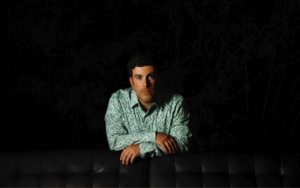 5 ways to improve your recordings by setting limitations in the studio
5 ways to improve your recordings by setting limitations in the studio
In a creative space, endless options can drive us crazy.
This is especially true in the studio, where expectations run high and budgetary and time restraints amp up the pressure. In this environment a limitation can be the very thing that keeps you sane.
Ever seen The Five Obstructions? It’s a great film, and a great illustration of how arbitrary obstacles can help us focus and push beyond our habitual moves.
If you’re about to head into the recording studio, consider some of these creative limitations:
1) Set a maximum track-count before the session begins — It’s not uncommon these days for Pro Tools sessions to have 100 tracks. Sure, if you’re Dr. Luke recording the next #1 single for Katy Perry, go for it. But if you’re squeezing in recording time on the weekends, do you really want to have to sift through all those tracks every time you open your session?
Instead, set a rule for yourself: no song on this album will have more than X tracks. It could be 4, 8, 16, 24,… whatever. [But if your session is taking up more than 24 tracks, you’re not exactly limiting yourself, are you?]
So try to put your minimal hat on. It’ll force you to boil things down to their essentials, and save you lots of time and worry when you get to the mixing stage.
Hint: if you’re approaching your track limit and still need room for an extra kick drum, maybe you can bounce/ping-pong the string quartet or the six backing vocals down to a stereo track. Which brings us to…
2) Submix, submix, submix — If you’re working with a grouping of instruments that all belong in the same universe, create a submix of that grouping (strings with strings, brass with brass, background vocals with background vocals, drums with drums, etc.). Once you’ve got the right blend for each grouping, print it to tape (or computer) and commit to it! Again, this move will save you time and stress when it comes to mixing, and open up more tracks if you need to add more instruments.
Hint: if you’re really second-guessing your submixes when it comes time to create the final mix, you can always go back into your session (unless you’re recording analog!) and create a new blend. Though that DOES kinda defeat the whole purpose of submixing in the first place.
3) Set rules for instrumentation and sonic palette — Before you begin a recording session, decide what instruments will be used, what effects, what samples, what sounds,… and stick to it for the whole project without introducing any other elements. Maybe you want all drums to be a vintage 808, but with real shaker and tambourine. Great. Sounds cool. But you can’t add real snare or cymbals later! Maybe you wan to use a clean sounding telecaster with some delays. Sweet! Forbid yourself to use any kind of distortion pedal for the whole album, and rely solely on the amp for crunch. By setting these ground rules, you get more creative with the instruments you ARE using (in order to diversify the songs across the album), AND you end up giving a cohesion to the project as a whole. These kinds of limitations are often what gives great albums a certain “feel.”
4) Give yourself a finite amount of takes per part — Nothing is worse than listening back to 20 guitar solos to find the magic moments of each that can be comped together. Voltron tracks are for suckas! Don’t be a robot. Be a human. Say to yourself, “I’m going to nail this guitar solo in 3 takes. If I don’t, I’m moving on to something else and coming back later.” Then, if you don’t get something that sounds right, delete those tracks. Begin again tomorrow.
5) Leave something out — Sometimes a song can take on a whole new life when you remove an element you’d previously thought crucial to the overall arrangement. What if you removed the synth pad from your latest hip-hop song and relied on the drum loop, bass, and samples to do the work? What if your acoustic guitar, accordion, and cello lullaby was actually more interesting without the acoustic guitar? Experiment with removing things. Give the song some breathing room. You might find that less is more.
—-
For an in-depth discussion about WHY the creative process benefits from limitation, and to hear some specific suggestions on how to stir things up in the studio, check out the interview below with legendary composer and record producer Brian Eno:
What are some of YOUR ways for staying sane, streamlined, and creative in the studio? Let us know in the comments below.
[hana-code-insert name=’newsletter-smarter-musician’ /]
[Picture of keyboard with stuck key from Shutterstock.]
